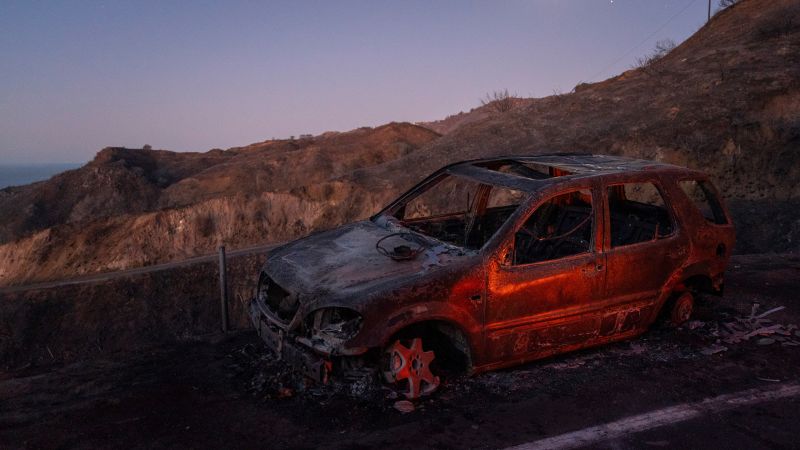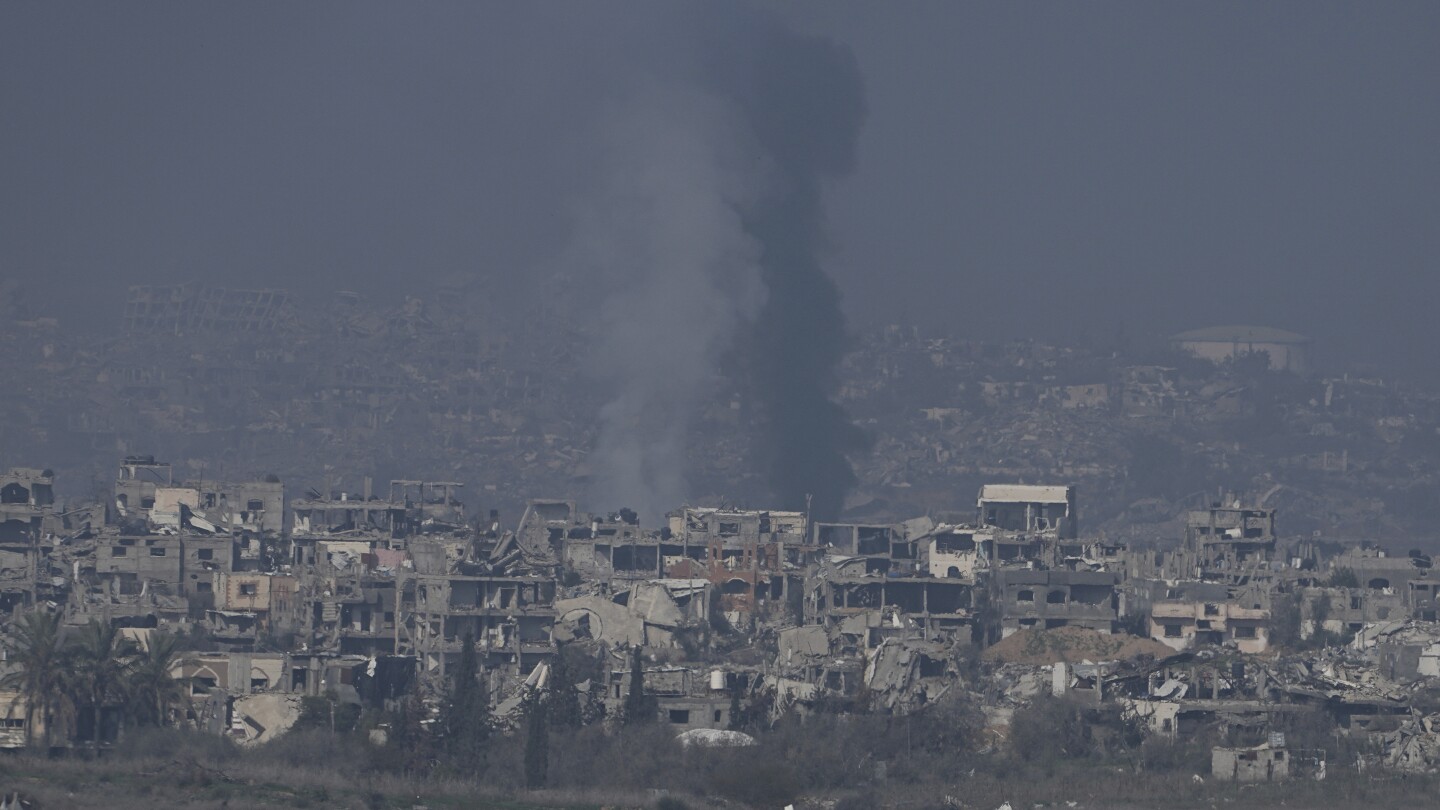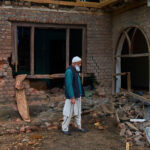CNN
—
As the winds die down and firefighters seize control of the deadly infernos that have scorched more than 60 square miles, Los Angeles faces an unimaginable task before anyone can rebuild: Cleaning up the toxic, smoldering remains.
More than 12,000 structures have been destroyed, many of them homes and businesses that are reduced to ashy foundation footprints. Cars are charred to the frame, their tires melted into black puddles of rubber. Batteries powering EVs — popular choices in LA — threaten to reignite like unexploded munitions.
The remaining fires are drawing out an agonizing return for residents, and it will be a months-long process to clean up the toxic ash, hazardous waste and charred debris, state and federal officials told CNN. Only then can home and business owners rebuild.
The work to identify and clean up hazardous waste could start as soon next week, an Environmental Protection Agency official told CNN. The EPA will be joined by California state agency CalRecycle in overseeing much of the clean-up work, officials said.
Charred hazardous waste and large debris must be cleared by professional crews, and the underlying soil needs to be treated to remove toxic chemicals that burned into it.
“It’s not the same as ‘I’m going to go in with a shovel and clear out the mud from the flood,’” said Patricia McIlreavy, president and CEO of nonprofit Center for Disaster Philanthropy. “The level of devastation is beyond.”
The Eaton and Palisades fires are the first and second-most destructive in Southern California history. “The Palisades fire alone is the size of Manhattan; just imagine the debris,” McIlreavy said.
“It’s going to be an enormous undertaking.”
In pictures: Deadly wildfires in Los Angeles County
The hazardous waste clean-up alone could take three to six months, an EPA official told CNN. And this is just the first step before homeowners and government officials can return to properties to start clearing non-hazardous debris, which could take many more months to finish.
About 500 EPA workers will work with the state to start clearing hazards like compressed gas cylinders, paint solvents, pesticides, fertilizers and ammunition, regional FEMA administrator Robert Fenton, Jr. announced Wednesday.
The EPA will work with law enforcement to safely dispose of large lithium-ion batteries destroyed in the fire, like those in electric vehicles and home power banks that store energy from solar panels. Once damaged, these big batteries pose a major safety risk.
“This is going to be one of the biggest cleanups with regard to lithium-ion batteries,” the EPA official said. They need to be treated like unexploded munitions because of their volatility. Batteries damaged by fire or salt water can explode and can take a long time to put out because of the lingering chain reaction inside the battery – something that also causes them to occasionally reignite.
Officials are working “swiftly” to complete its first phase of hazardous debris removal so that families can return to their properties as soon as possible, said California Environmental Protection Agency Sec. Yana Garcia – who oversees the state’s equivalent of the federal EPA.
“We’re aware of the desire for folks to come in and return their properties,” Garcia told CNN.


Once the EPA is done with their work, debris removal crews with heavy equipment like excavators, skid steers and hauling trucks will demolish and haul away the rest of the rubble.
“All structural ash and debris will be removed from the property down to the foundation,” said Cory Koger, a water program manager with the US Army Corps of Engineers who helped oversee debris removal after the 2023 Maui wildfires.
Standing walls and burned trees that are in danger of falling are also removed, Koger said in an email interview.
Debris removal typically takes between one to four days per land parcel, depending on the size. Metal and concrete are typically rinsed and recycled. Other debris that can’t be recycled is moved to a landfill, Koger said.

Homeowners are responsible for paying for debris removal. Debris removal is typically covered by fire insurance, but insurance companies have been pulling out of California and other states exceptionally prone to wildfires or hurricanes.
“It comes down to what are your circumstances and can you remove it,” said McIlreavy, the CEO of the disaster nonprofit. Some homeowners “may find it harder to recover from the fire than others.”
If the cost of damages exceeds an insurance policy, FEMA can step in to cover the gap. FEMA also helps cover debris removal when it poses an immediate threat to public health and safety, a FEMA spokesperson said.
But large, unstable debris isn’t the only thing that poses a risk to human health. Burning houses and cars release toxins, plastics and heavy metals like lead into the air, soil and water. The miniscule size of these toxins mean they can travel into a person’s bloodstream and lungs, posing serious health risks, particularly to people who already have cardiovascular disease.

Wearing gloves, masks, long sleeves and pants to keep ash from settling on skin or hair is essential; but even with these protections, people who are pregnant, are children, are elderly or have pre-existing conditions shouldn’t come into contact with toxic ash because of the heightened risk.
A recent fire with similar destruction in an urban area – homes, businesses, cars destroyed and buildings reduced to ash – was the Maui fire that tore through Lahaina in August 2023. The US Army Corps crews sprayed down contaminated ash with water and sealed it tightly in plastic before disposing of it in a debris site so it could not escape into the air and water. It was a clear sign of how toxic the remains of violent fires are.
“It’s very dangerous,” said McIlreavy.




















